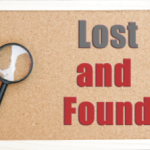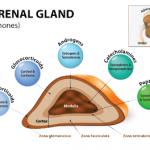Over the past 20 years, Eric L. Matteson, MD, MPH, emeritus chair, Division of Rheumatology, and emeritus professor of medicine at the Mayo Clinic College of Medicine and Science, Rochester, Minn., as well as a past president of the Rheumatology Research Foundation, has authored or co-authored six books about the history of rheumatic disease and rheumatologists.
“I learned that it’s often difficult to get all the facts right,” says Dr. Matteson. “There are a lot of dead ends [when] pursuing historical threads, [and] references to historical circumstances published by others are mostly right, but can also lead you astray.”
Academic & Career Background
While studying in Germany his junior year of college, Dr. Matteson met his future wife, Herta, who convinced him to apply to medical school there. He obtained his medical degree in 1982 from Friedrich-Alexander University, Erlangen-Nürnberg, Germany.
Dr. Matteson completed his residency in internal medicine at Southwestern Michigan Area Health Education Center, Kalamazoo (now Western Michigan University Medical and Health Sciences Center), in 1986. In 1988 and 1989, he completed rheumatology fellowships at the University of Michigan, Ann Arbor, and at Mayo Graduate School of Medicine, Mayo Clinic College of Medicine, Rochester, Minn. In 1990, he earned an MPH from the University of North Carolina, Chapel Hill.

Top: Dr. Matteson at his computer and surrounded by his books.
Middle: Dr. Matteson is also an avid birder. Here, he teaches children how to properly release a goldfinch.
Bottom: Dr. Matteson and his wife, Herta, have been traveling a lot since his retirement. Here they are shown with king penguins on Macquarie Island, in the southwestern Pacific Ocean about halfway between New Zealand and Antarctica.
During this time, he also practiced as an internist, specializing in rheumatology, in the U.S. Army Reserve as a major, serving in the Medical Corps between 1993 and 2001.
In 1990, Dr. Matteson started a career at the Mayo Clinic as a clinician, researcher in epidemiology and developer of a clinical trials program. Through the years, he was promoted to professor of medicine and chaired the Division of Rheumatology before retiring from clinical practice in 2018.
Following his retirement, for nine months between 2018 and 2019, Dr. Matteson practiced rheumatology in Christchurch and Auckland, New Zealand.
Dr. Matteson and his wife are also avid bird watchers and teach bird biology to children visiting a nature center or attending summer camp near their home.
Finding Truths
Books written and co-authored by Dr. Matteson have been published by the Mayo Clinic and other publishers and distributed to university libraries at medical schools throughout the country.
His first book, Polyarteritis Nodosa, was published in 1996 and covered the history of the disease. His research piqued his interest in Adolf Kussmaul, a prominent German physician of the 1800s who made great contributions to rheumatology, specifically in the recognition of polyarteritis nodosa. This abiding interest eventually led Dr. Matteson to write—with the late Frederick Kluge, MD, a German physician—a biography of Dr. Kussmaul.
Dr. Matteson’s second book, however, was A History of Idiopathic Vasculitis, published in 1999. While researching the disease, he discovered the first descriptions of a form of large vessel vasculitis, now called Takayasu arteritis, had been published in the 19th century and that aortitis had been described as early as the 16th century. The first two cases of microscopic polyangiitis were reported in 1923 by a German Jewish physician, Friedrich Wohlwill, who was forced to flee Nazi Germany in 1933.
Interested not only in diseases, but also in the lives and times of other physicians, Dr. Matteson and his colleague, Alexander Woywodt, MD, traced the origin of granulomatosis with polyangiitis, initially named after Friedrich Wegener, a Nazi physician. They found the disease had been described earlier by another German physician, Fritz Klinger. Following their five-year-long investigation and published articles on the topic, the disease was renamed in 2010.
Another book, titled Behçet’s Disease, includes accounts of this disease translated from French and German into English, noting the condition had been described well before Behçet’s own publication.
His next book, co-authored with Wolfgang Keitel, MD, in translation to English, focused on Max Hirsch, a German Jewish physician and scientist who co-founded the German Society of Rheumatology and was a leading figure in the founding of the International League of Associations for Rheumatology. Dr. Matteson says Dr. Hirsch disappeared during the Holocaust.
“By tracking down his descendants, a picture of what happened to him emerged,” says Dr. Matteson, adding that Dr. Hirsch, along with his wife and one of his sons, was murdered in a mass execution outside Riga, Latvia, in 1942. “All references to him were eradicated by the Nazis, so he was lost to history until we were able to discover his story. This was a very intense piece of research and work.”
Dr. Matteson’s most recent book, co-authored with Gene Hunder, MD, focuses on the history of rheumatology at the Mayo Clinic. He says his next book will focus on the contributions of Canadian physician William Osler to rheumatology and describe the evolution of his thoughts as influenced by his visits to German and Austrian medical centers in the 19th century. Among other things, Osler is known as one of the founding professors of Johns Hopkins Hospital and was a key figure in the development of modern medical education and training.
“The history of medicine and rheumatology teaches us lessons about how our discipline developed and how people described the diseases early on,” says Dr. Matteson. “I hope these books will help rheumatologists better understand the history behind rheumatologic diseases and enhance patient care.”
Carol Patton, a freelance writer based in Las Vegas, Nev., writes the Rheum after 5 column for The Rheumatologist.
Books, Books, Books
Can’t find Dr. Matteson’s books on Amazon? Don’t despair. You can find them in numerous medical libraries, including those at the University of Michigan and Mayo Clinic, and in the U.S. Library of Congress. But the best way to get his books is to email him at [email protected].



